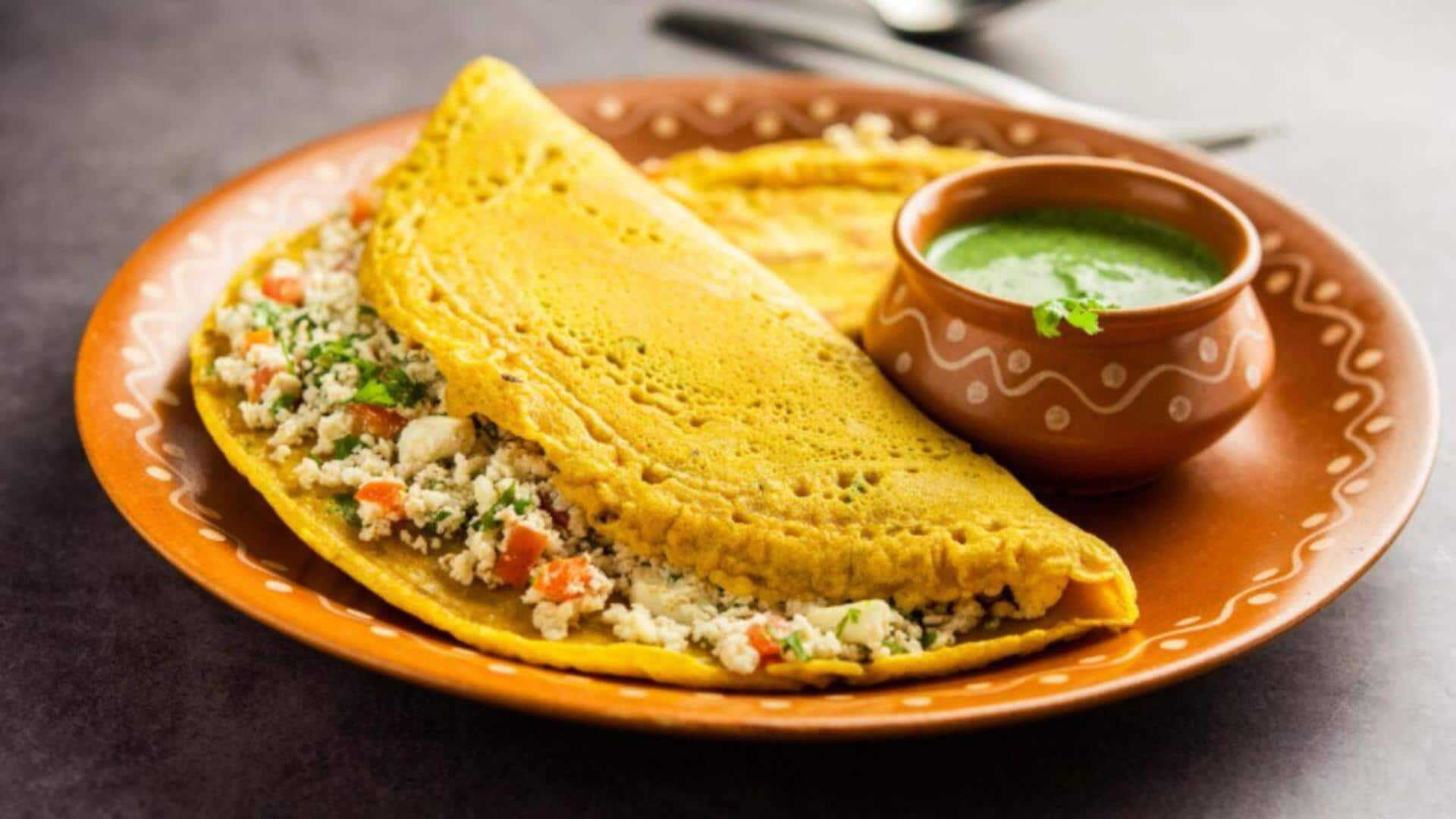
Cheela: From simple breakfast to all-day favorite
What's the story
From a humble breakfast staple to a beloved dish across India, cheela has come a long way. This simple pancake, made from gram flour, has evolved into a versatile culinary delight. Once limited to the breakfast table, cheela is now enjoyed at any time of the day. Its journey reflects changing tastes and the adaptability of Indian cuisine, showcasing how traditional dishes can evolve while retaining their essence.
#1
Origins of cheela
Cheela's roots lie in the Indian subcontinent, where it was traditionally prepared with basic ingredients such as gram flour and spices. It was mainly consumed as a morning meal or snack. The simplicity of its preparation made it a favorite among households with limited resources. Over time, regional variations emerged, each adding unique flavors and ingredients that catered to local palates.
#2
Evolution into a versatile dish
As Indian cuisine became more diverse and globalized, cheela also transformed. From being just a plain pancake, it became a canvas for creativity. Chefs started adding vegetables, herbs, and even cheese to make different versions of the dish. This evolution made cheela suitable for all occasions - from street food stalls to fine dining restaurants.
#3
Nutritional value and health benefits
Apart from its culinary versatility, cheela is also loved for its nutritional value. Made from gram flour, it is high in protein and fiber, which makes it a healthy option for those looking for healthy meals. The addition of vegetables further boosts its vitamin and mineral content. This health aspect has made cheela popular among health-conscious people looking for tasty but healthy options.
#4
Regional variations across India
Across India, cheela has been adapted to suit local tastes and ingredients. In some regions, rice flour is used instead of gram flour; in others, spices like cumin or coriander are added for flavor. These regional variations not only highlight India's diverse culinary landscape but also show how traditional dishes can be modified without losing their core identity.